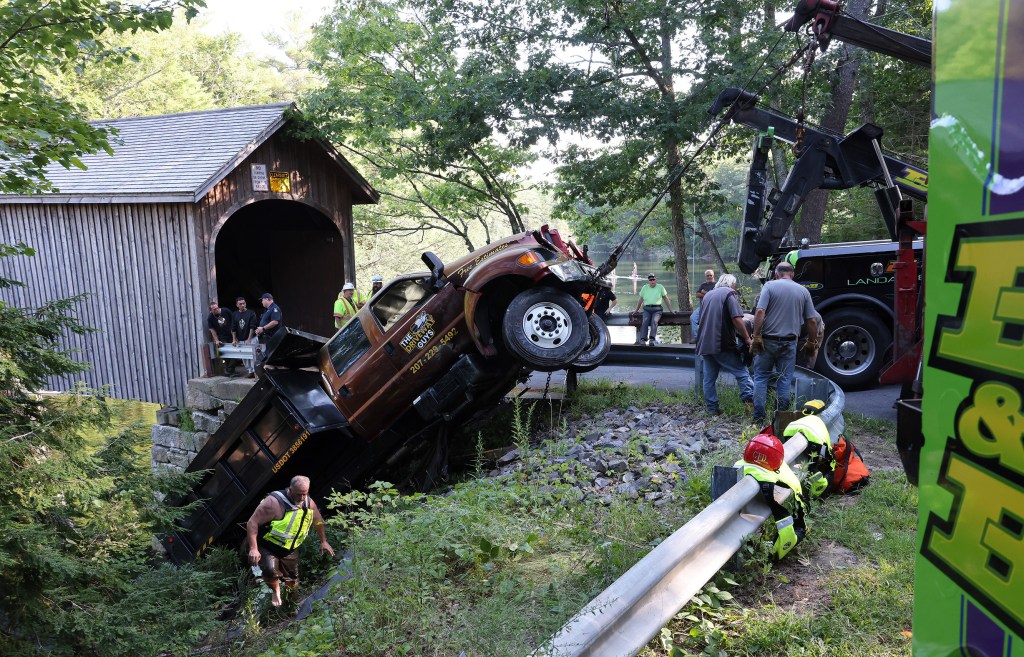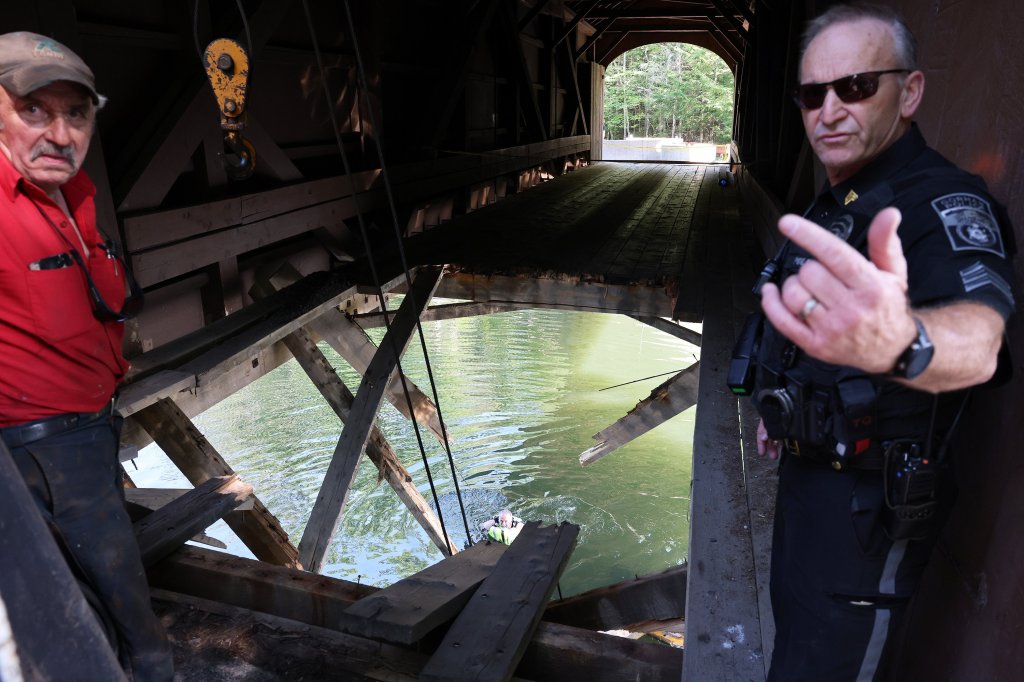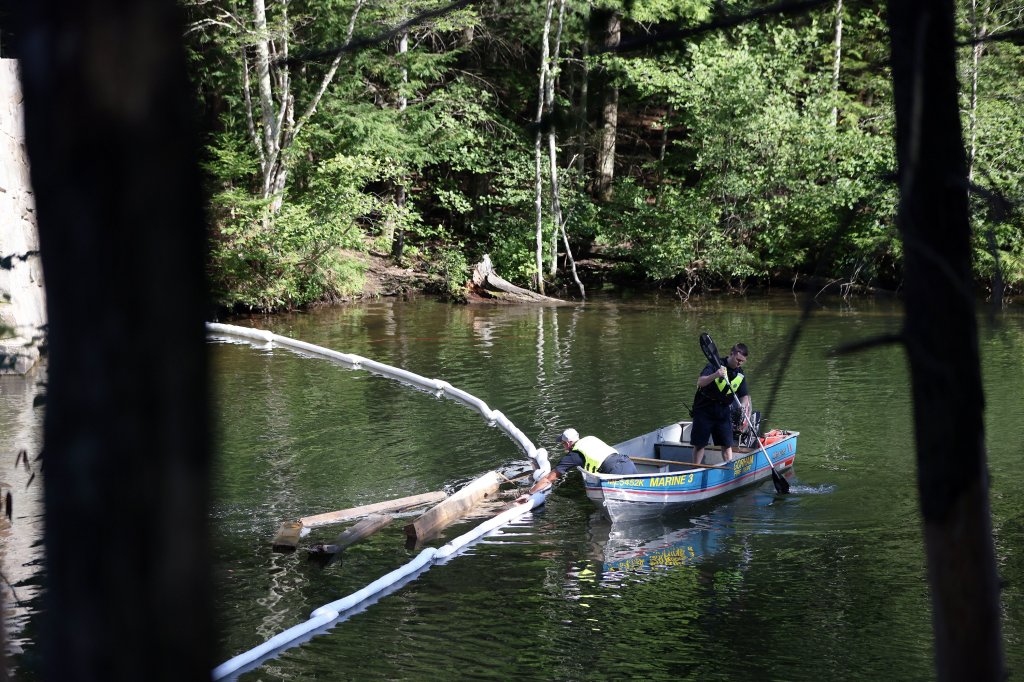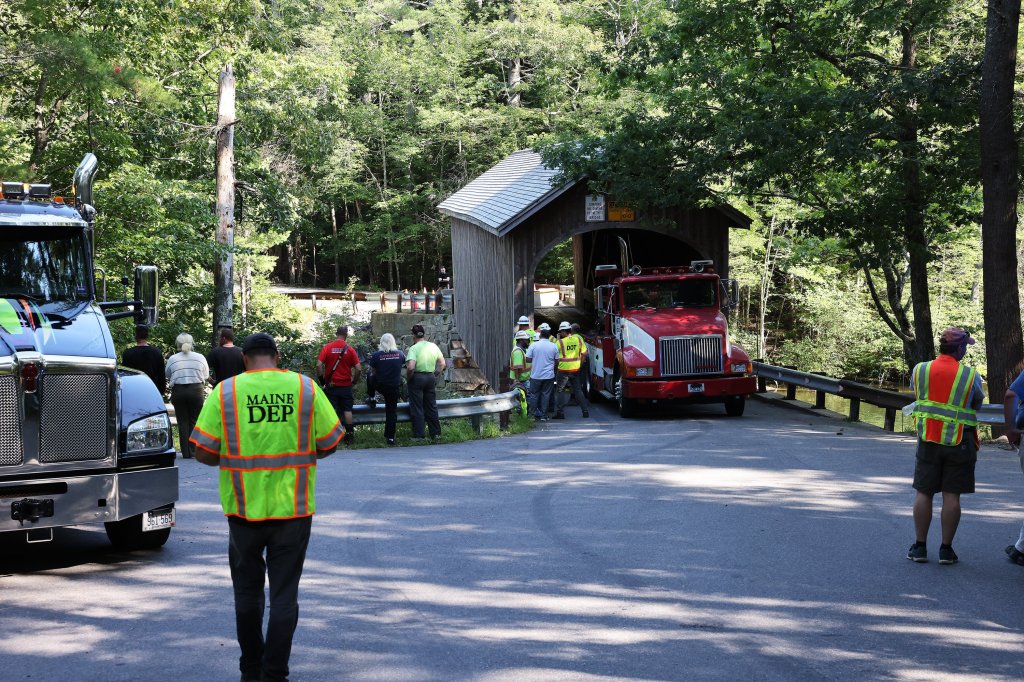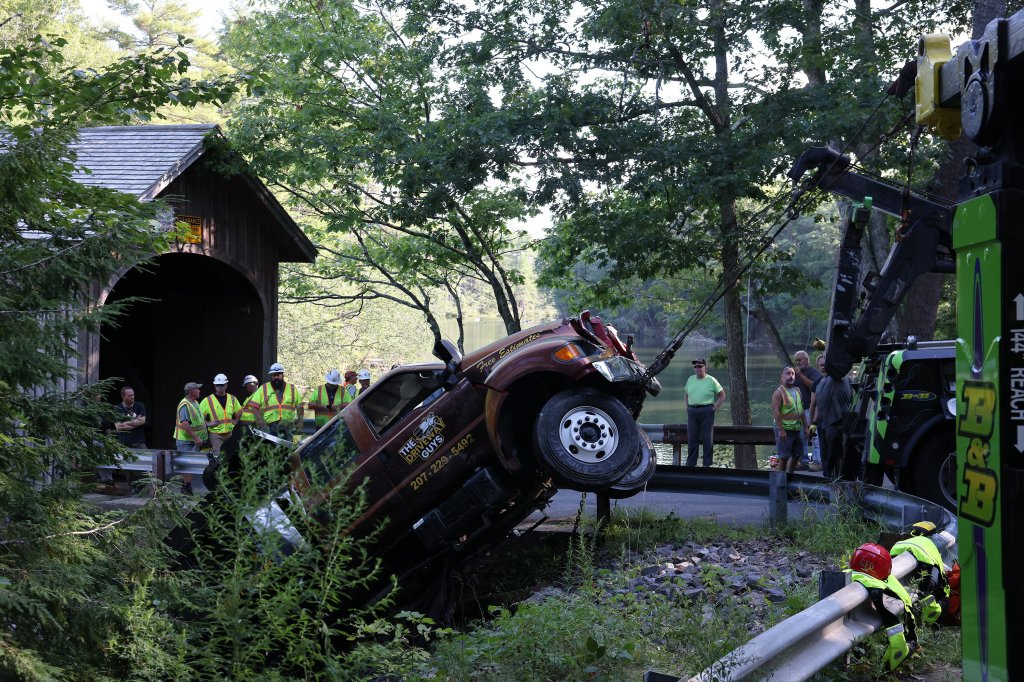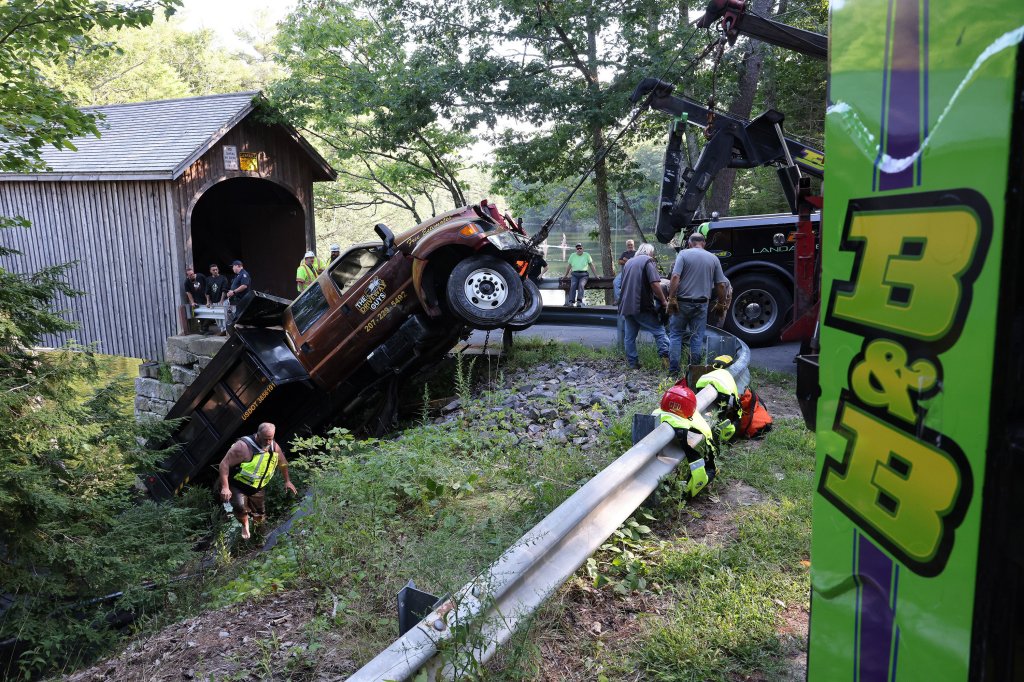Gee, I thought CAD meant Computer-Aided Design...
Long-awaited cleanup begins by digging a giant hole in Portland Harbor
A 9-acre disposal site will be dug to accept up to 245,000 cubic yards of contaminated sediment that has built up between the wharves, piers, marinas and boat yards of Portland Harbor over the last 70 years.
The long-awaited $25 million Portland Harbor dredging project starts on Monday as contractors begin digging a 9-acre pit in a shallow South Portland cove where seven decades of a working waterfront’s industrial sins will be buried over the next three winters.
Cashman Dredging of Massachusetts will use a barge-mounted crane to dig a confined aquatic disposal cell, or CAD, to be filled with contaminated sediments that have built up around the piers, marinas and wharves, stifling the harbor’s economic vitality and threatening the health of Casco Bay.
With that sediment gone, the waterfront will regain the vessel berths that have been lost at low tide. And the occasional boat propeller or keel digging into the bottom or storm surge won’t stir up such a toxic brew after the clean-up.
It’s been a very, very long time coming, said Bill Needelman, Portland’s waterfront coordinator.
The navigation channel linking Portland Harbor and the Gulf of Maine is dredged every 15 years or so, most recently in 2014, by the U.S. Army Corps of Engineers. It is up to the owners or the city to remove sediment that shoals up between piers, wharves, marinas or boat launches.
But the sediment deposited in Portland Harbor’s working waterfront by three quarters of a century of industrialization is too contaminated to be dumped at sea. Tests found it high in the remnants of fossil fuels, heavy metals like zinc, mercury, copper and lead, and pesticides.
Hauling it to a hazardous waste disposal landfill was too costly for individual property owners to bear.
Tides can drop as much as 12 feet in Portland Harbor during full or new moons. At low tide, boats often wind up stuck in the mud, forced to lift their engines or use poles to push their way out. While the depth boats need to operate varies by size, , lobster boats generally require 2 or 3 feet of water, a ferry boat 7 to 10 feet and a large herring vessel up to 15 feet.
The lack of berthing has created a Catch-22 situation, said Phineas Sprague Jr., president of Portland Yacht Services and Portland Ship Yard. Wharf owners are losing money, leaving them no choice but to charge more for the remaining berths. That puts the squeeze on the commercial fishing industry.
“There will be no next generation of commercial wharfingers,” Sprague said of wharf owners before the last dredging grant was approved, signaling the project was a go. “Most of my friends have left the waterfront, and I will not allow my children to work in my business. My time is limited.”
Friends of Casco Bay is happy that the cities and the harbor commission agreed to locate the CAD pit in an area outside of productive lobstering grounds and designed the project to ensure the least amount of environmental damage was done during the dredging.
“While most support will focus on the significant economic impact the dredge will have for Portland and South Portland, we focus on this unprecedented opportunity to remove legacy contaminants,” Casco Baykeeper Ivy Frignoca said in one of her letters of support for the project.
It is an “ideal time” to remove the toxic sediments from the harbor, which will improve both habitat and public recreation, as Portland and South Portland are also taking steps to reduce their sewage overflows and stormwater runoff into the harbor, Frignoca said.
This will be Maine’s first CAD, but the concept is not new. The technique has been safely used in waters around the world, according to the Environmental Protection Agency, which
permitted the Maine CAD. There are CADs in Boston Harbor; New Haven, Connecticut; Providence, Rhode Island; and even the St. Louis River.
The Portland CAD will be dug in a shallow, little-used South Portland cove just downstream from Casco Bay Bridge, between South Port Marina and Coast Guard Station South Portland. The trapezoidal, 9-acre burial site will be 50 feet deep at its deepest, with sloped sides that run about 800 feet long and 425 feet wide.
Clean silt, marine clay and glacial till will be removed to create the CAD cell, and the sediment will be taken by barge to an open ocean disposal site about 7 miles off Dyer Point in Cape Elizabeth. Two or three tug boats and scows will make up to five trips a day back and forth during the monthlong dig.
The dredging season will end on March 15, which means that any construction noise will be muffled by seasonally closed windows. There were no complaints during the last federal dredge of the channel, said Needelman, and that process required blasting. This one will not.
Once the pit is dug, the project moves into its second phase – the dredging of about 245,000 cubic yards of contaminated sediment from 47 areas in Portland Harbor’s waterfront, including 19 piers, 10 marinas and boatyards, the Portland public boat launch and the Portland commercial barge landing.
Dredge scows will carry the contaminated sediment from the wharf or pier to the CAD and release their loads directly over the pit. Project officials plan to use a seasonal layering approach for the disposals, putting the most contaminated dredges of each season underneath the cleaner ones.
Project officials say the contaminated dredge material will be more stable when buried in the CAD than where it is now. In the CAD, it will be buried under a layer of clean fill at the end of each dredge season. Because the CAD will be “overdug,” natural sedimentation will cover it at a rate of about 2 inches a year.
Dredging the equivalent of 24,500 dump trucks full of muck will take about three winters. Officials will keep going over the budget, looking for ways to cut costs and boost waterfront participation, but at this time, disposing of dredge at the CAD will likely cost about $35 per cubic yard.
Needelman hopes construction of the CAD can be completed in a month so the contractor can be asked to extend its stay and complete the first harborfront dredges this winter. First up would be the Maine State Pier and Ocean Gateway, which already have permits and funding in place.





